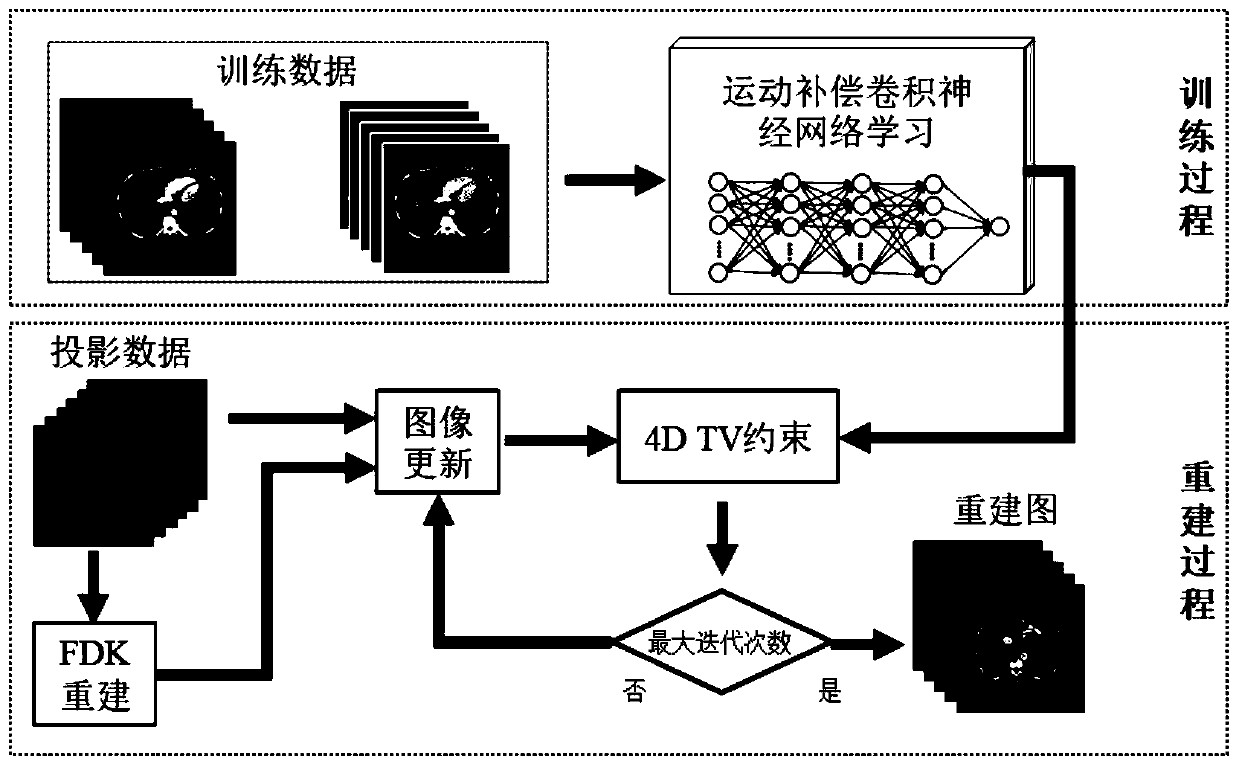4D-CBCT imaging method based on motion compensation learning
A 4D-CBCT and motion compensation technology, which is applied in the fields of radiodiagnostic equipment, radiotherapy, medical science, etc., can solve the problems such as star-streak artifacts and noise cannot be effectively removed, and achieve the improvement of details that are easy to lose and slow down Effects of motion blur and suppression of streak artifacts
- Summary
- Abstract
- Description
- Claims
- Application Information
AI Technical Summary
Problems solved by technology
Method used
Image
Examples
Embodiment 1
[0048] A flow chart of a 4D-CBCT imaging method based on motion compensation learning in this embodiment is as follows figure 1 As shown, the specific steps are as follows:
[0049] Step 1. Prepare the training data set required by the network.
[0050] Select high-quality 4D-CBCT training reconstruction images from the hospital image database where T is the total number of phases, V t p For the CBCT reconstruction image at phase t, when the intermediate phase reconstruction image is selected For label phase data, the rest of the phase reconstruction map V t p is the sample phase data; when the intermediate phase reconstruction map is selected For the sample phase data, the rest of the phase reconstruction map V t p is the tag phase data; t≠t 1 ;
[0051] Specifically, when using a specific training data set, for example, when radiotherapy is performed on the same patient, it is necessary to locate and track the tumor in real time, which requires high-quality 4D-C...
PUM
 Login to View More
Login to View More Abstract
Description
Claims
Application Information
 Login to View More
Login to View More - R&D
- Intellectual Property
- Life Sciences
- Materials
- Tech Scout
- Unparalleled Data Quality
- Higher Quality Content
- 60% Fewer Hallucinations
Browse by: Latest US Patents, China's latest patents, Technical Efficacy Thesaurus, Application Domain, Technology Topic, Popular Technical Reports.
© 2025 PatSnap. All rights reserved.Legal|Privacy policy|Modern Slavery Act Transparency Statement|Sitemap|About US| Contact US: help@patsnap.com



